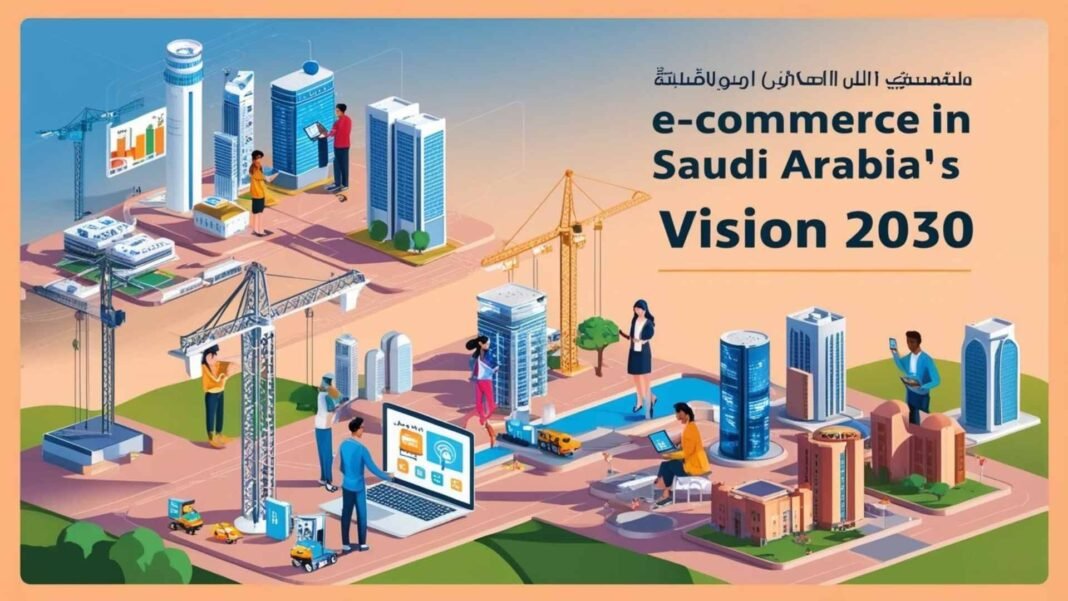Launched with the approval of King Salman bin Abdulaziz Al-Saud, this ambitious plan leverages the Kingdom’s strengths, such as its pivotal role in the Arab and Islamic worlds, substantial investment capabilities, and strategic geographic location. At the core of this transformation is the digital economy, with e-commerce emerging as a critical driver of economic growth and innovation. As of April 2025, the intersection of Vision 2030 and e-commerce growth is reshaping Saudi Arabia’s retail landscape, supported by government initiatives and a tech-savvy population.
The E-commerce Landscape in Saudi Arabia
The e-commerce sector in Saudi Arabia has seen remarkable growth, aligning with Vision 2030’s focus on digital transformation. In 2023, the market was valued at $5.15 billion, accounting for 6% of the Kingdom’s $92.6 billion retail market, according to data from the U.S. Commercial Service. Projections indicate a significant expansion, with the market expected to reach $23.46 billion by 2027 and exceed $44 billion by 2030, as reported by various industry analyses. This growth is driven by a combination of high internet penetration, which reached 98.6% in 2022, and a young, tech-savvy population, with over 60% under 30 years old.
Consumer adoption is also on the rise, with e-commerce user penetration increasing from 66.7% in 2023 to a projected 74.7% by 2027, translating to 34.5 million users by 2025. This surge is fueled by widespread smartphone usage and a cultural shift towards online shopping, particularly accelerated by the COVID-19 pandemic, which saw 91% of Saudis regularly shopping online, with 14% doing so daily, as noted in a 2022 report by Checkout.com.
Government Initiatives Driving E-commerce Growth
Vision 2030 has placed a strong emphasis on digital transformation, with e-commerce identified as a cornerstone of economic diversification. The Saudi government has implemented several initiatives to support this growth. Key efforts include:
- Promoting Cashless Transactions: A central goal is to achieve 70% cashless transactions by 2030, with electronic payments already exceeding 57% in 2021, surpassing the 55% target set by the Financial Sector Development Programme (FSDP). This push towards digital payments, as noted in the U.S. Commercial Service report, is crucial for fostering a robust e-commerce environment.
- Improving Business Environment: The government has focused on enhancing the business climate by restructuring economic cities, creating special zones, and deregulating the energy market to make it more competitive.
- E-commerce Education and Infrastructure: Initiatives include expanding e-commerce education programs in academic institutions, supporting e-commerce services in cities, and introducing guidelines for cybersecurity in e-commerce, as mentioned in a 2023 GMI Research report summary. The government has also simplified licensing for domestic delivery providers and invested in logistics infrastructure, including warehousing and fulfillment centers, to support e-commerce operations.
- Support for SMEs: Vision 2030 aims to increase the contribution of small and medium-sized enterprises (SMEs) to GDP from 20% to 35% by 2030. E-commerce provides SMEs with a platform to reach wider audiences, both domestically and internationally, fostering entrepreneurship and economic diversification. This is evidenced by a 10% increase in e-commerce registrations in 2024, reaching over 40,000 businesses, as reported by Fast Company Middle East.
Impact on the Economy
The growth of e-commerce is a vital component of Saudi Arabia’s strategy to diversify its economy and reduce reliance on oil revenues, which currently account for 43% of GDP. Vision 2030 seeks to transform the economic structure into a diversified and sustainable model, focusing on enhancing productivity, increasing private sector contribution, and empowering the third sector, as outlined in official economic reports. E-commerce contributes to this goal in several ways:
- Economic Diversification: As e-commerce expands, it creates new revenue streams beyond traditional sectors like oil. The projected $44 billion e-commerce market by 2030, as per industry projections, represents a significant shift towards a digital economy, reducing the Kingdom’s dependence on oil.
- Job Creation: The rise of e-commerce has led to increased employment opportunities, particularly in logistics, digital marketing, and customer service. This aligns with Vision 2030’s goal of creating diverse job opportunities for Saudis while attracting global talent, as noted in the Vision 2030 overview.
- Increased SME Contribution: E-commerce platforms enable SMEs to scale their operations and reach new markets, supporting Vision 2030’s target of increasing SME contribution to GDP. The 10% growth in e-commerce registrations in 2024, with cities like Riyadh leading with 16,834 businesses, underscores this trend.
- Global Positioning: Saudi Arabia’s focus on e-commerce is positioning it as a digital hub in the Middle East. The Kingdom aims to increase the share of modern commerce and e-commerce in retail to 80% and online payments to 70% by 2030, reflecting its ambition to lead in the global digital economy, as highlighted in various industry reports.
Success Stories: E-commerce Startups Under Vision 2030
The growth of e-commerce under Vision 2030 has given rise to several success stories, particularly among innovative startups, as detailed in a 2024 Tekrevol article. Two notable examples are:
- Tamara: Founded in 2020 by Abdulmajeed Alsukhan and Turki Bin Zarah, Tamara is a buy-now-pay-later (BNPL) platform that has revolutionized online shopping in Saudi Arabia. By allowing customers to split payments without extra charges, Tamara enhances purchasing power, boosts e-commerce sales, and increases customer retention. Its success reflects the growing demand for flexible payment solutions in the digital economy, aligning with Vision 2030’s focus on innovation and economic diversification.
- Tabby: Launched in 2019 by Hosam Arab, Tabby is another BNPL startup that has gained traction by enabling customers to split payments into four interest-free installments. Tabby’s model supports e-commerce growth by making online shopping more accessible and affordable, while also promoting financial inclusion. Both startups have contributed to the e-commerce ecosystem, aligning with Vision 2030’s goals.
Additionally, the retail sector has seen significant advancements in logistics infrastructure. For instance, Al-Nahdi Medical Company, the largest retail pharmacy chain in the region, inaugurated the first smart distribution center for the retail sector in the Middle East and North Africa in 2022, enhancing the efficiency of e-commerce operations and ensuring faster, more reliable delivery of goods, as reported in Economy Middle East.
Vision 2030 has set the stage for transformative change in Saudi Arabia, with e-commerce emerging as a key driver of economic diversification and digital innovation. The rapid growth of the e-commerce market, supported by government initiatives and a tech-savvy population, is reshaping the retail landscape and contributing to the realization of Vision 2030’s goals.






